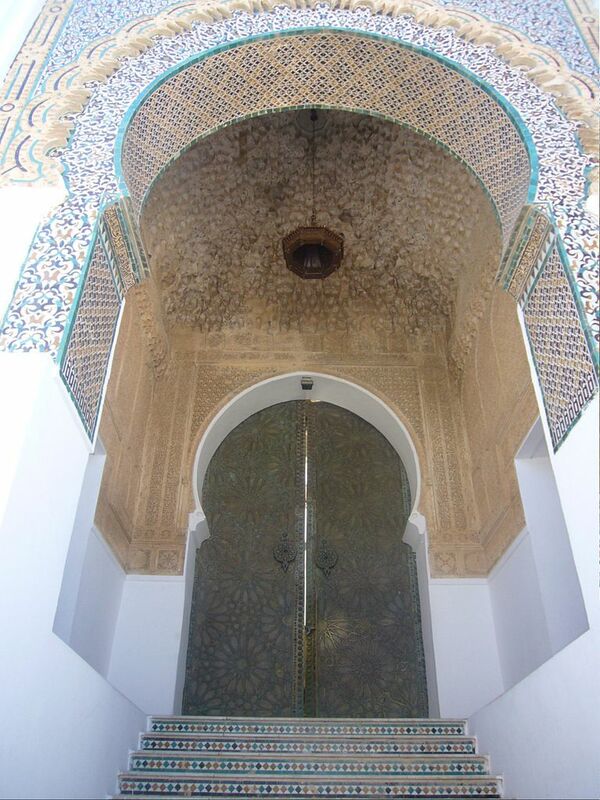Sidi Bu Medyan complex, Algeria
Type:
Religious complexes,
Mosques,
Portals,
Minarets,
Tombs
Date:
ca. 1200,
mid-fourteenth century
Location or Findspot (Modern-Day Country):
Algeria
Description:
In the village of 'Ubbad, Algeria, outside Tlemcen, is the burial place of the Sufi master Sidi Shu'ayb Abu Madyan (1116–98). Born in al-Andalus, Abu Madyan became one of the earliest Sufi practitioners in the Maghreb. His domed tomb, constructed soon after his death by the Almohad caliph Muhammad al-Nasir (d. 1213), became a pilgrimage destination. In the mid-fourteenth century the Marinid sultan Abu al-Hasan (d. 1351) promoted the site by adding a mosque, baths, and a small palace to house him when he visited. His name appears in a long Arabic text on the facade.
The mosque courtyard has a monumental entrance (7 m tall) and a vestibule adorned with a muqarnas dome, carved stucco panels, and sculpted bronze doors. To the right is a square brick minaret (27.5 m tall), covered with lacelike patterns and with ceramic tiles on top. In the prayer hall, horseshoe-shaped arches support five aisles topped with barrel vaults; the vertical surfaces are all dematerialized with carved stucco. A Sunni madrasa was built next to the mosque a few years later; its tiled courtyard is flanked by cells for students. The most famous resident and teacher was the great scholar Ibn Khaldun (1332–1406). The Amazigh Marinid sultans promoted Islam by refurbishing the tombs of Sufi holy men and building madrasas in all the cities of their realm.
The mosque courtyard has a monumental entrance (7 m tall) and a vestibule adorned with a muqarnas dome, carved stucco panels, and sculpted bronze doors. To the right is a square brick minaret (27.5 m tall), covered with lacelike patterns and with ceramic tiles on top. In the prayer hall, horseshoe-shaped arches support five aisles topped with barrel vaults; the vertical surfaces are all dematerialized with carved stucco. A Sunni madrasa was built next to the mosque a few years later; its tiled courtyard is flanked by cells for students. The most famous resident and teacher was the great scholar Ibn Khaldun (1332–1406). The Amazigh Marinid sultans promoted Islam by refurbishing the tombs of Sufi holy men and building madrasas in all the cities of their realm.
Relevant Textbook Chapter(s):
8,
9,
10
Repository and Online Resources:
• Learn more about this Sufi complex on the ArchNet website.
Image Credits:
Wikimedia Commons; Library of Congress






